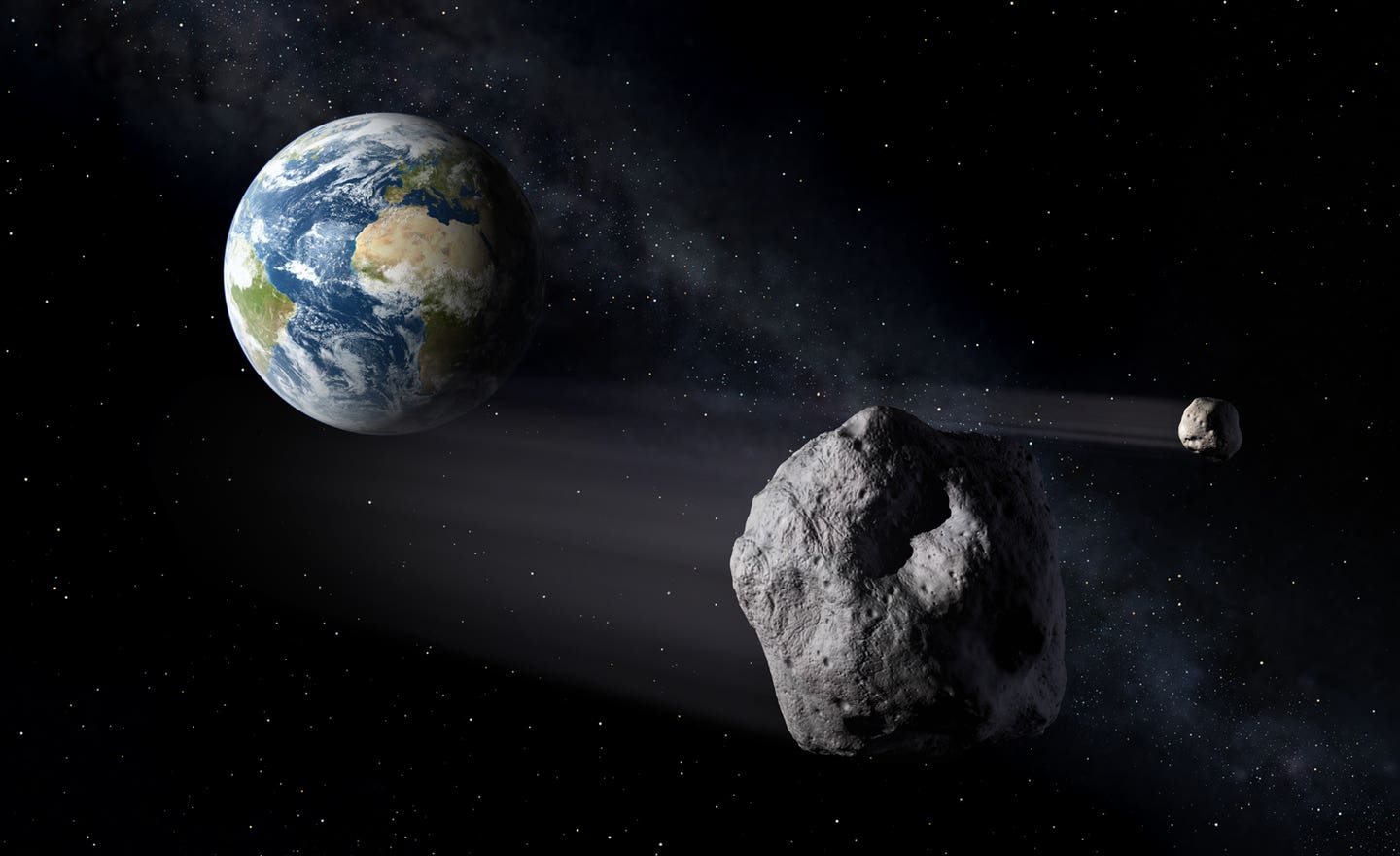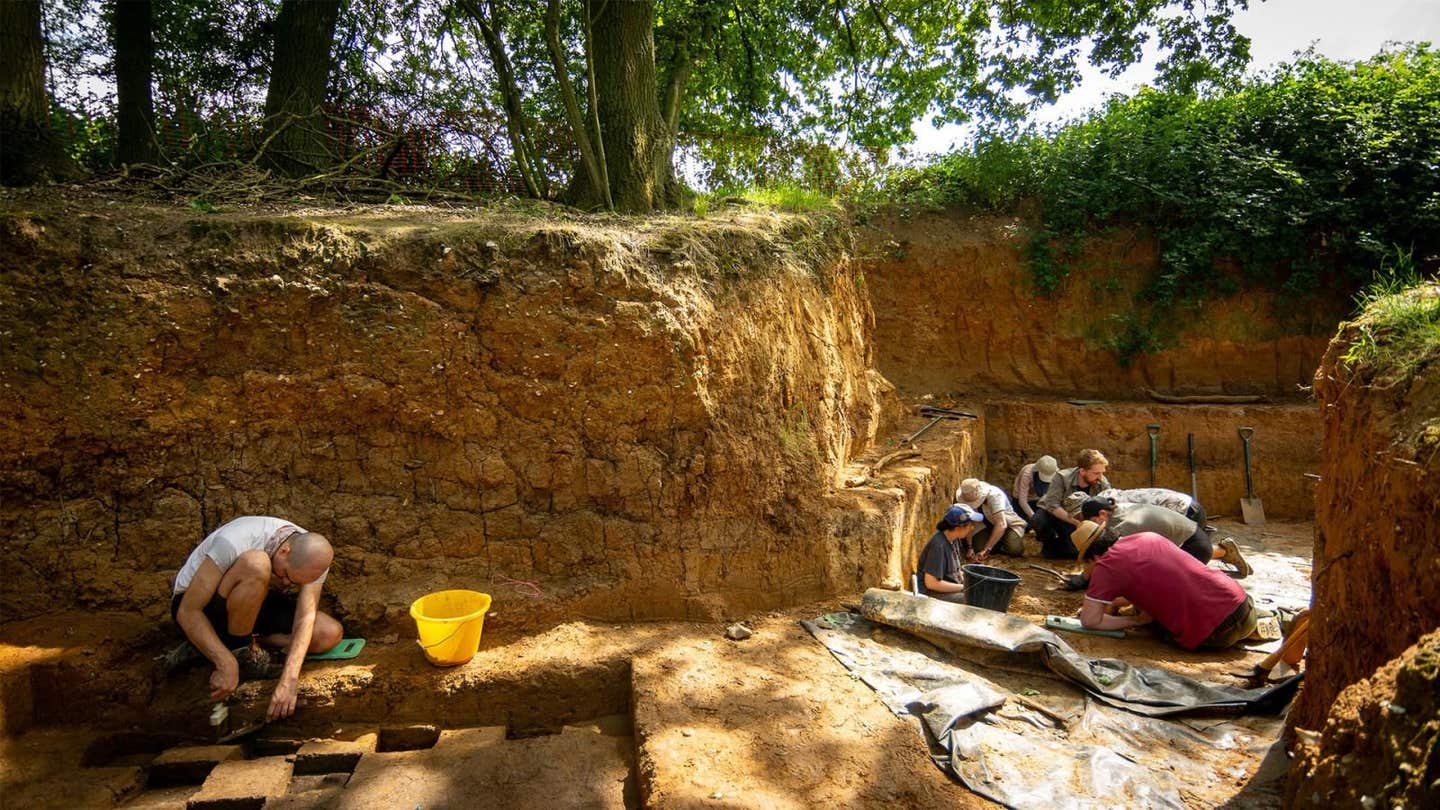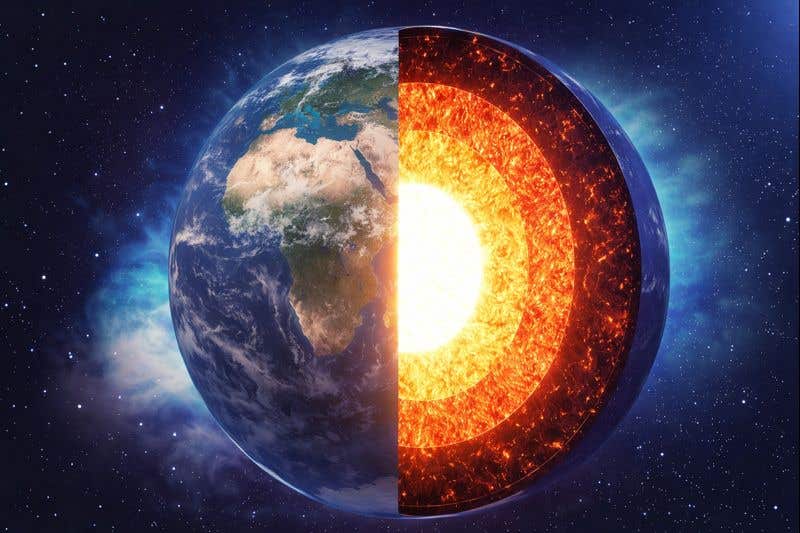NASA reveals how it would alert the public of an upcoming catastrophic asteroid strike
On the ominous date of April 13, 2029, which coincidentally falls on Friday the 13th, an unsettling event is expected to occur.

On the ominous date of April 13, 2029, which coincidentally falls on Friday the 13th, an unsettling event is expected to occur. Asteroid Apophis will fly very close to Earth, but won't hit us for at least 100 years. (CREDIT: ESA - P.Carril)
On the ominous date of April 13, 2029, which coincidentally falls on Friday the 13th, an unsettling event is expected to occur.
A sizable asteroid named Apophis, measuring 1,100 feet in width, will make an exceptionally close approach to Earth, becoming visible from select locations in the sky. Importantly, there is no imminent danger of the colossal rock colliding with our planet. However, its passage will bring it within a distance of less than 20,000 miles from the Earth's surface, closer than the orbits of some of the United States' most valuable weather satellites.
Asteroids like Apophis hold a fascinating place in our existence: Big impacts are at once terrible threats to our lives and potentially the habitability for many species, but they're also extremely rare and irregular events.
Today, humanity has an advance warning of such events, thanks to the efforts of NASA's Planetary Defense Coordination Office. This office is responsible for identifying, tracking, and evaluating the risk posed by potentially hazardous asteroids within our solar system.
Related Stories
Lead Program Executive for the Planetary Defense Coordination Office, Lindley Johnson, emphasizes the importance of identifying these threats before they become imminent dangers. Working in collaboration with the International Asteroid Warning Network (IAWN), a global coalition of astronomers, NASA strives to detect and assess hazardous asteroids.
In the event of an impending asteroid strike, the IAWN follows established protocols to alert the public. Observations are shared among network members for verification and danger assessment. Once a consensus is reached, NASA issues an alert.
Johnson explains that while there's no literal "red phone" on his desk, formal procedures are in place to notify relevant authorities, such as the White House for threats to the US and the United Nations Office of Outer Space Affairs for international concerns.
Asteroids are classified as "potentially hazardous" if they exceed approximately 460 feet in diameter and intersect Earth's orbit within a distance of 0.5 astronomical units from the Sun. There are currently around 2,300 known potentially hazardous asteroids, with about 153 of them larger than 0.6 miles across.
Detecting and tracking these asteroids is crucial, and NASA, along with other IAWN partners, continuously monitors both newly discovered and previously identified asteroids. All observational data is compiled into a database managed by the Minor Planet Center. With over 34,000 near-Earth asteroids cataloged so far, NASA can confidently predict their orbits for up to a century in advance.
How will the public be warned?
Warnings from NASA can fall into two categories: either signaling a close encounter or indicating a potential impact. According to Johnson, the legitimacy of these warnings is confirmed by NASA's acknowledgment of the event.
Radar images taken of Apophis in 2012. (CREDIT: NASA/JPL-CalTech)
Close Encounter: A close encounter signifies that a space rock poses no threat of striking Earth, but NASA deems it worthy of public attention, as elucidated by Johnson. These objects can range from as small as a 30-foot (10-meter) rock to larger ones like Apophis. While others might detect these close encounters before NASA and disseminate the news, Johnson reassures that NASA prioritizes accuracy over timeliness. Verification may take a few hours as the agency aims to provide the most reliable information rather than rushing to announce it first.
"Our aim isn't to be the quickest in announcing, but to furnish the most accurate information," Johnson emphasized.
2. Potential Impact:
When NASA identifies a potential impact threat—typically an object larger than 30 feet across (10 meters) with a greater than one percent chance of hitting Earth—the situation becomes grave.
Johnson's office promptly alerts NASA to inform the White House, Congress, and other governmental bodies. Public alerts won't solely rely on a NASA press release but will be coordinated through official channels. "At that juncture, the White House assumes responsibility for disseminating new information," Johnson stated. "It escalates to a national emergency," he added, indicating that FEMA would prepare for potential disaster if an impact on U.S. soil is probable.
However, NASA collaborates closely with other agencies and organizations, such as the European Space Agency and the International Asteroid Warning Network (IAWN), recognized by the UN.
A critical aspect of this process involves informing government leadership not only about the likelihood or possibility of an impact but also about its potential consequences. Numerous factors, including the object's size and composition, play a role. "Will it disintegrate in Earth's atmosphere or impact the ground?" Johnson pondered. "We can provide guidance to leadership regarding the potential outcomes of an asteroid impact on our planet."
Despite the potential threat posed by asteroids like Apophis, which has a remote possibility of colliding with Earth, the odds of such an event are minimal.
An artist's illustration of NASA's Double Asteroid Redirection Test mission. (CREDIT: Mark Garlick / Getty Images)
Nevertheless, NASA remains vigilant and prepared to defend our planet. In 2021, NASA conducted its first planetary defense test mission, successfully altering an asteroid's orbit by colliding an unmanned spacecraft with it. This mission demonstrated the feasibility of deflection techniques, paving the way for future endeavors. Among these techniques are the "gravity tractor," which employs gravitational interaction to alter an asteroid's trajectory, and an ion beam method to achieve a similar effect.
However, should an asteroid threat emerge within a short timeframe—less than five years—deflection might not be feasible. In such cases, destruction could be the only option to mitigate the impact's severity. With even less warning time, perhaps just a few months, options become severely limited.
Fortunately, the primary focus of IAWN is to detect asteroids decades, if not centuries, before they pose a threat. This extended lead time allows for proactive measures to be taken, ensuring the safety of our planet. As Johnson succinctly puts it, "That gives us plenty of time to then try to do something about them while they’re still in space, so that we completely avoid any catastrophe here on Earth."
For more science and technology stories check out our New Discoveries section at The Brighter Side of News.
Note: Materials provided above by The Brighter Side of News. Content may be edited for style and length.
Like these kind of feel good stories? Get the Brighter Side of News' newsletter.



